#cynthia raggedy ann
Text

Merry Christmas :))) Cynthia & Belindy deserve some love I think
(Cynthia's hair is based on a little girl I saw at the theater with tinsel woven into her braids it was SO cute)
-Mod General D.
20 notes
·
View notes
Text

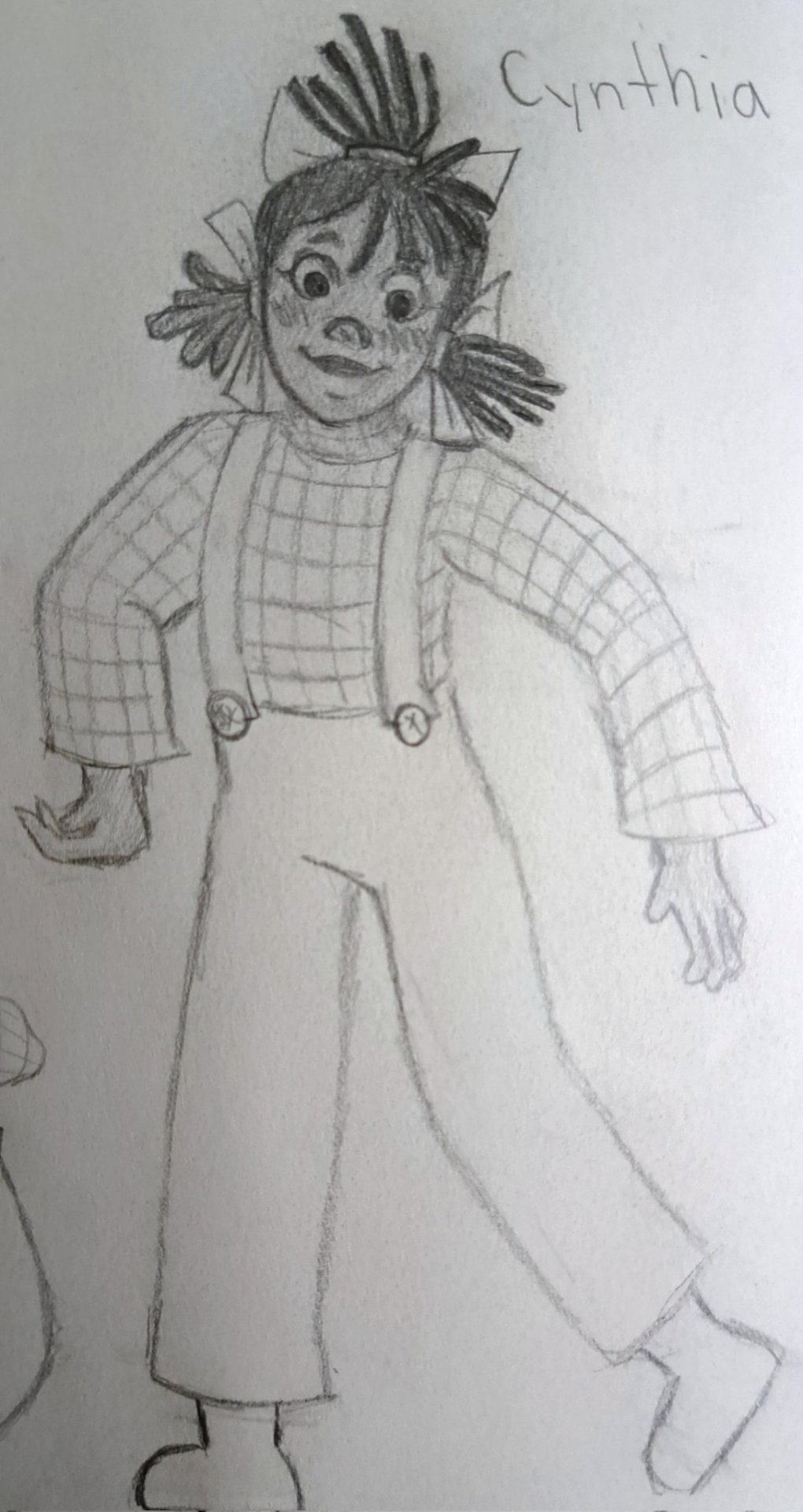
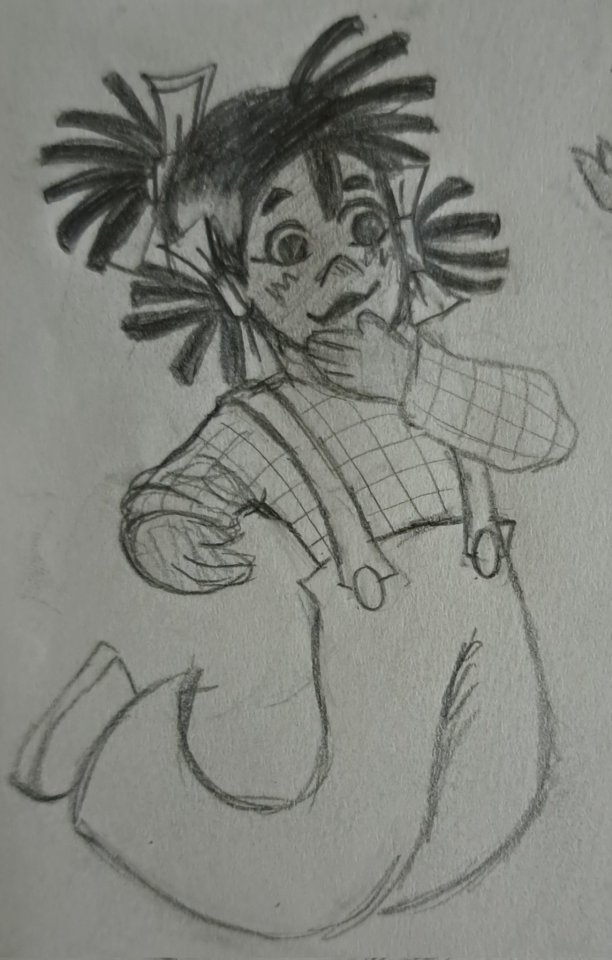
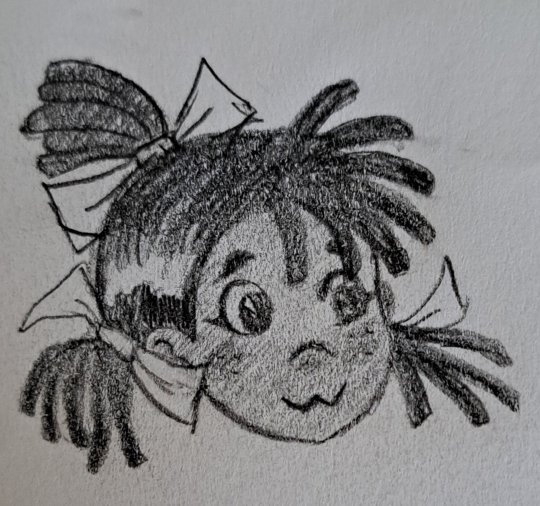
The silly themselves!!
#my artwork#raggedy ann and andy#raggedy ann#cynthia my beloved#cynthia raggedy ann#raggedy ann books#the silly#redraws
27 notes
·
View notes
Text
⚠️Vote for whomever YOU DO NOT KNOW⚠️‼️


66 notes
·
View notes
Text
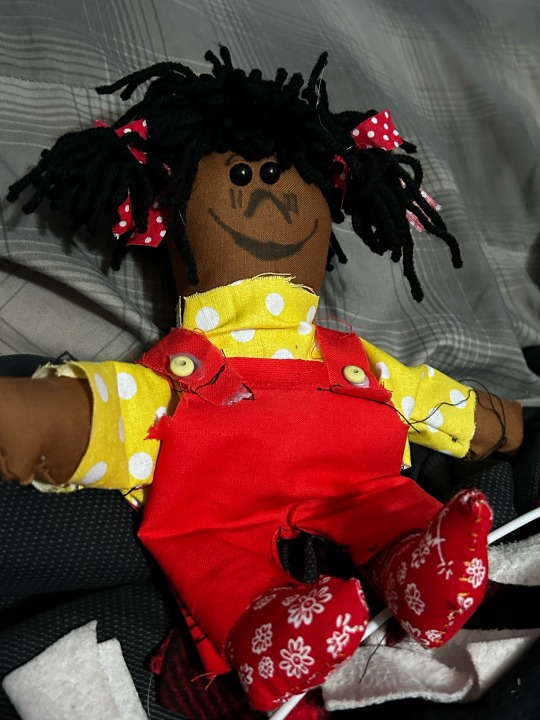
Cynthia!!
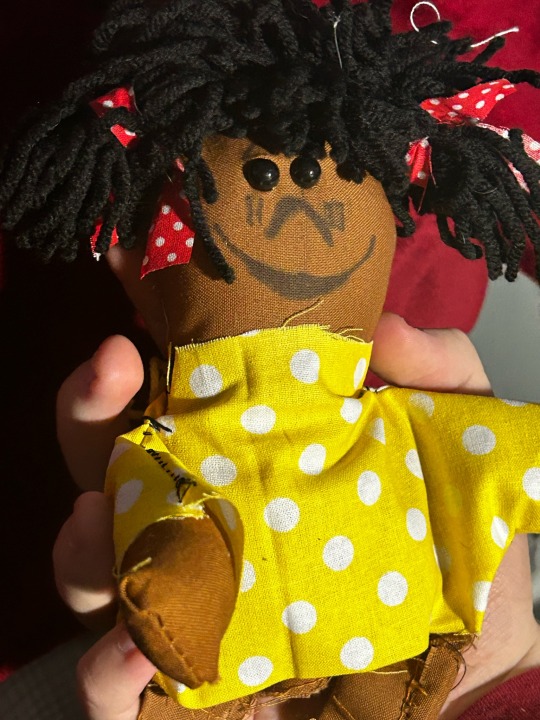
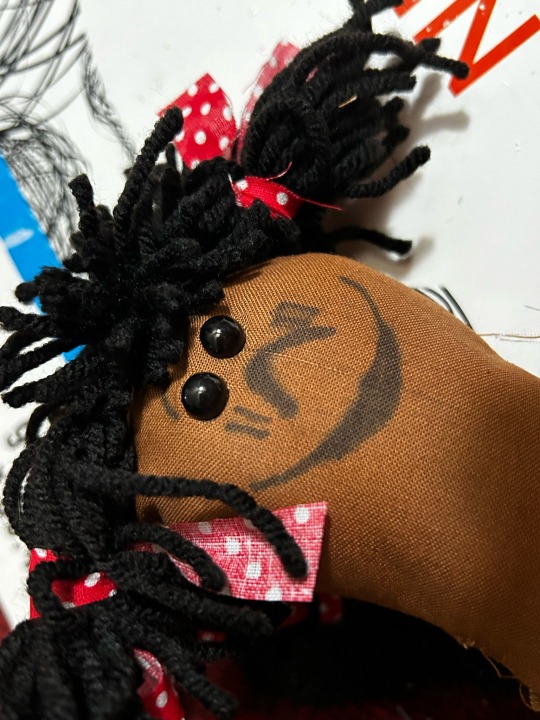
#raggedy ann and andy#raggedy ann#raggedyfandom#raggedydoll#raggedy ann musical#rag dolly#rag dolly musical#cynthia#raggedy andy
21 notes
·
View notes
Note
Andy... uh Baby and I accidentally burnt your stuff sorry..
-Cynthia
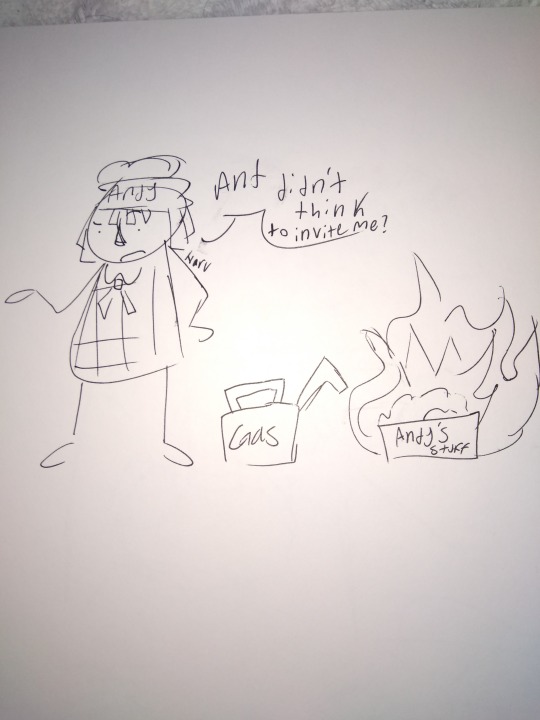
C'mon, bows, you know better...
#raggedy andy#raggedy ann and andy#raggedy ann musical#rag dolly#raggedy ann and andy a musical adventure#Cynthia
8 notes
·
View notes
Text
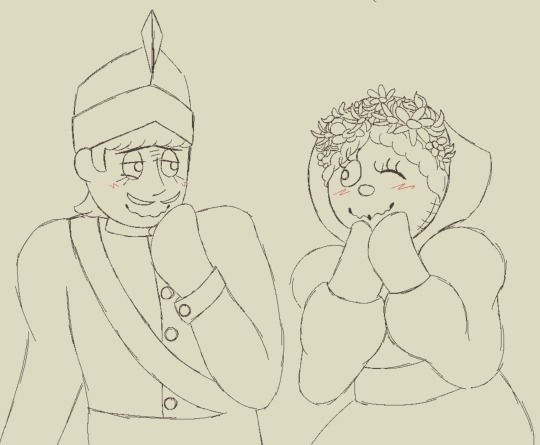
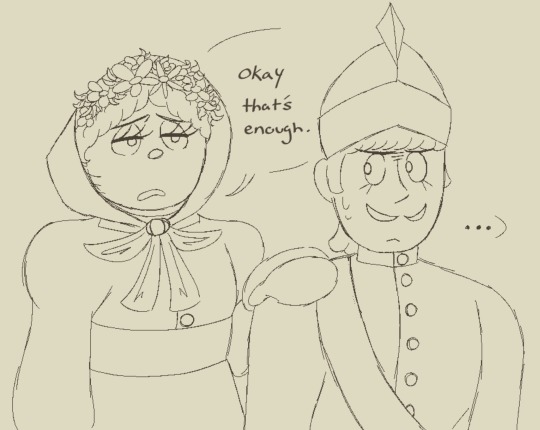
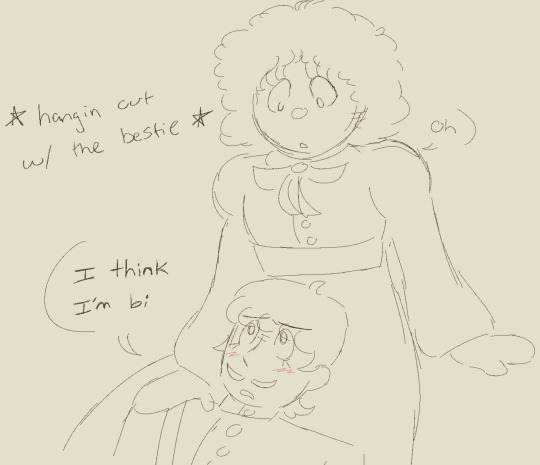

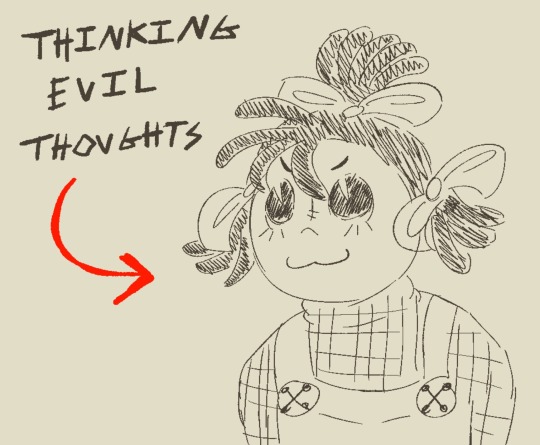
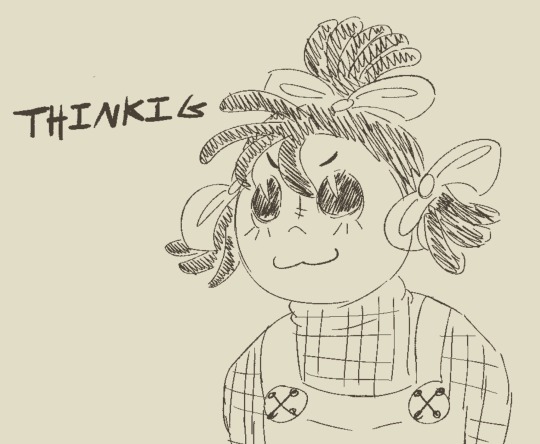
Some sketches from the other night
#raggedy ann#raggedy ann and andy#raggedy andy#beloved belindy#cynthia#uncle clem#uncle clem the scottish doll#i was not expecting clem to be so violent in wooden willie#belindy got fed up with him lmao#and clem and belindy would have such a deep friendship they know each others darkest secrets lol#mine
51 notes
·
View notes
Note
This sounds far fetched, but is it possible if we can add Arthur the dog to the musical as an added side character? I feel like he would be a fun inclusion to such a dark musical. Also, instead of him having a mascot costume, he could be a puppet of some sort. I have concept art of what I want him to look like as well as screenshots of him for reference.
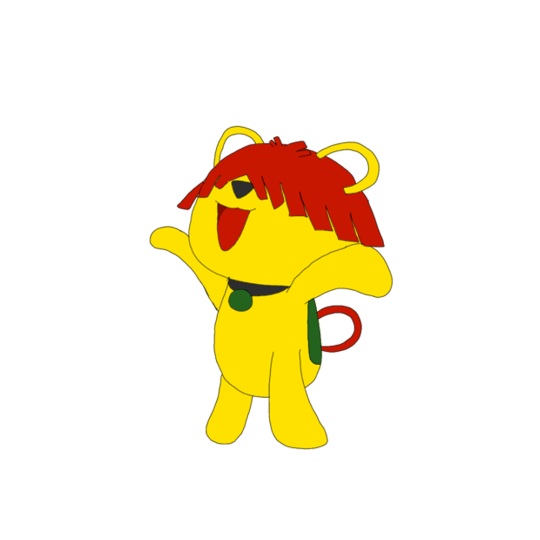
We all love Arthur over here at RARE!
However, we have tried adding and taking away many different characters from this musical, and we feel that our current lineup of characters is the perfect balance of personalities and plot advancers, as well as a perfect visual balance.
But don't fret! Regarding Arthur, we do have plans to include him as a cameo in the doll hospital, as well as many more of our favorite Raggedy friends!
Here is our current (hypothetical and extremely tentative) list of doll hospital cameos (they will be in plush form, as a part of the set, laying on the hospital beds):
Uncle Clem
Henny
Fredrika
Stitchy Micky (yes this is a fanmade character but she made fandom history+i love her.)
Babette
Topsy
Hallmark Belindy
The baby doll with the cracked face (books)
Wooden Willie
The Tin Soldier
Arthur (!!! <3)
Socko
Cleety the Clown
Snoopwiggy
Wiggysnoop (these two ^ will probably share a cot.)
Panda
Cynthia
We at RARE all think that so many of our favorite characters deserve to be apart of the show, so this is our solution! I think it's a nice nod to the media and smaller characters that helped Raggedy Ann continue to live on!
Thanks for the ask!
#raggedy ann#rag dolly#raggedy ann musical#rag dolly musical#raggedy ann broadway#raggedy ann revival effort#rag dolly broadway#raggedy ann and andy
28 notes
·
View notes
Text
all and full offense… bitches really be looking like raggedy anns then be trying to compare themselves to me.
SIT DOWN CYNTHIA PICKLES!!!!!
0 notes
Text
Ann: Why are there little handprints all over the wall?
Andy: *whispering to Cynthia* Why are there little handprints all over the wall?
Cynthia: *whispering* because I have little hands.
Andy: Because she has little hands.
#submission#ann#andy#cynthia#raggedy ann#raggedy ann musical#raggedy ann broadway#rag dolly#rag dolly musical#rag dolly broadway#raggedy ann revival effort#incorrect quotes#incorrect raggedy ann#incorrect rag dolly#cynthia is a book character!!#shes precious i love her#but now you all know that book characters arent off limits here >:)#any character in the raggedy mythos is on the table#so have fun! get creative!#send in those submissions >:))))
8 notes
·
View notes
Text
Rampart (11, B+)
Why this film?: Natural Born Killers and The Edge of Seventeen were tempting choices, but everything I’d heard about Rampart’s politically rich storyline and ambitious execution made this an easy choice right off the bat. Plus, a character actor like Woody Harrelson in a lead role feels like the kind of treat more films should offer, especially when they’re as chameleonic as him.
The Film: What’s the right way to describe the impactful but imperfectly stitched way that Rampart holds itself together? “Raggedy” seems like a good option, given how the film bounces from character to character and plot strand to plot strand with little to suggest which direction it’s going to take from one scene to the next. “Rabid” might be a better descriptor of how comes across, its risky stylization and mangy narrative informed by an odious protagonist doing his damndest to hold onto a way of life he’s taken advantage of for his entire life and keeps relentlessly sabotaging, and one it frequently seems would be happy to get rid of him. The seams always appear to be showing, and not always in productive ways, though its unpredictable trajectory, ferocious acting and direction, and fascinating decisions about its lensing, editing, and sound mixing are so bracing and frequently impressive that it’s impossible not to notice them. A-list actors orbit Woody Harrelson’s central role as a deranged cop playing the kinds of bit roles that would be just as well served by far less recognizable names, the fact of their celebrity compared to the size of their roles and their whack-a-mole reappearances in the story as disorienting as the in-monologue editing and whiplash narrative turns. Rampart’s ability to disorient its audience is nicely synchronized with the downfall of a character who refusal to accept his defeat is frequently upending, his paranoid inability to grasp the consequences of his violent and prejudiced behavior too ensconced in decades of social acceptability for him to even compute the speed at which he’s being thrown in the trash.
As much as Rampart’s experimental design and pronounced assets are on display at all times, the film is even more confrontational with its politics. In this case, those politics are the tearing open of Dave Brown’s psychology of entitlement and bigotry, and the process by which a man of an era that seemed so alive a second ago is suddenly forced to reckon with his latest crimes, which somehow aren’t the worst things he’s ever done, and must reckon even more so with how changing tides have made what was once durigur behavior now completely unacceptable. His virulent bigotry and the safety he feels wielding it as a members of the LAPD’s Rampart division - even in the middle of a scandal that implicated over seventy officers in everything from bribery to murder - is realized in his very first dialogue scene, as regales tales of former glories with another cop while menacing a female trainee into finishing all of her fries at a lunch stop, asking her invasive questions as he and writer/director Oren Moverman boldly assert that this is the man who emblematizes what the police looked like in late-90’s LA. This is only further emphasized as he joy-rides his police cruiser through a group of Mexican mechanics in the parking lot of their cop and beats a suspect through the cheap, plastic windows of a drug store office to get information out of him, not just certain that he will suffer no consequences for this but even telling this trainee so as if it was an unspoken regulation. The grounded performances, observant shaky-cam and spry editing keep these sequences from becoming cartoonishly over-the-top, depicting Brown’s violent behavior as wholly mundane and completely corrosive at the same time. His teaching that his behavior is the norm of the LAPD to this woman points to a Training Day setup but wholly avoids it by refusing the idea that Brown is in any way a “bad apple” corrupting an otherwise decent system the way that Alonzo Harris was depicted as in his film. Everyone is like this, and there’s no indication a different cop would’ve shown her the ropes any differently.
This sense of entitlement bleeds into his home life, a precarious situation where Dave seems to co-habitat with his two ex-wives - who’re sisters - and the daughter apiece he had with each of them. The women don’t live in the same house, and Dave seems to find out whether he’ll spend the night with either of them or go bar-hopping to find some woman to share a hotel room with when he asks them if they want to have sex. Again, it’s a tribute to the actors for putting over such an unconventional scenario that could’ve died on arrival, but Cynthia Nixon and Anne Heche make the scenario completely credible as the make warm conversation and perry around his advances. Oldest daughter Helen, her hair messy dyed with blue streaks while wearing a 90’s art punk getup, is the only person in Dave’s life who’s openly antagonistic towards him, and the youngest is intuitive and happy to see her dad even if she’s clearly not too keyed in to the tensions around her family.
These establishing scenes of domestic and workplace tension, ones that will evolve and mutate as the story progresses, are just as impactful to watch as the moments where Brown enacts physical violence against an undeserving party or use his power as a cop to threaten some unfortunate employee into giving him a hotel room or pills. Jay Rabinowitz’s editing is so lean yet so spiky that we’re able to feel every shift of mood in Dave’s conversations or confrontations, sometimes cutting scenes as though leaving out bits of a conversation or monologue but more often than not finding unexpected angles to spy on sequences that appear to be playing out in real time. These choices dislodge a scene from any predictable beats as much as the performances do, and the vantage points that show us these sequences alternate between intimately close to the characters or at such a distance that it feeds into the overall mood of paranoia. Even if Dave’s eventual theory that he’s being used as a putz by such an unfathomable web of players from the LAPD higher-ups to family members, hookups, and ostensible allies, feels like nothing more than a right-wing conspiracy theory, the editing expertly plays into these delusions without santifying them. The plot-starting scene of him beating a Hispanic motorist to the brink of death for T-boning his police cruiser and trying to flee the scene is executed with brutal economy, by Dave and the storytellers, and it’s perfectly in tandem with their presentation of non-violent scenes and control of mood throughout the film.
From here Rampart bunny-hops between different plotlines and characters seemingly at random. It’s hard to pinpoint a coherent logic to how these scenes connect to one another - either they do or they don’t, and this disorganization might be Rampart’s most significant hurdle to overcome for viewers to get into the film. Individual plotlines are picked up in bursts and dropped for extended periods of time, creating evocative moods that leave the actors to fill in the gaps between individual characters while the plot moves ever onwards. Even as the methodology behind how these stories scrape against each other is never quite clear on a scene-by-scene level, the cumulative portrait of a man going off the deep end in order to keep his dying way of life intact still hits. The film is merciless in picking apart how Dave is propped up by the status given to him as a white male police officer, his bigotry and paranoia so acidic that the background context of the Rampart scandal almost doesn’t matter in informing who this man is. He’s an endemic source of misogyny and racism, propagating his ideologies with the assurance of systemic cooperation that calling them delusions of grandeur gives them too little credit. His biggest calling card as a police officer, the one that earned him the moniker “Date-Rape” Dave, comes from the fact that he’s all but admitted to having executed an accused serial date-rapist rather than taking the man into custody, fabricating a story that he feared for his life trying to arrest him. An older white cop suggests that Dave facing any consequences is so out of the norm that the whole thing must’ve been a set-up, from the driver he beat to the person who filmed the incident to the government officials seeking to see him punished for his actions. Feeding in to Dave’s already-existing paranoia and neuroses about women and people of color, of any non-cop in any job who disrespects his authority, this conspiracy web soon encompasses his ex-wives, his current fuck buddy, the old man himself, as Dave turns to blackmail and criminal actions to keep himself afloat. Rampart balances a tricky line between objectivity and subjectivity, many of its choices seemingly influenced by the paranoia of its protagonist even as the film is able to stand apart from his rancor and hold it up to a microscope, dissecting his bullshit for all it’s worth.
It helps tremendously that these characters are written and directed so sharply, and that their interpreters make so many specific and charismatic decisions in bringing them to life while avoiding cliche or cartooning. Woody Harrelson, sporting a skinhead-lite haircut and a wiry, muscular physicality, emanates the size and danger of his character’s bigotry while keeping him scaled to uncomfortably human size. Brie Larson’s righteously pissed-off daughter and Robin Wright’s sad, carnal, and increasingly suspect friend with benefits may very well be the most startling performances after Harrelson’s, though Nixon, Heche, Sigourney Weaver, Ned Beatty, Ben Foster, Ice Cube, Steve Buscemi, and Audra McDonald are just as inspiring for evoking such sharp personalities with minimal screen time and unexpected entrances and exits. Everyone is able to keep a firm grip on their characters while connecting threads over gaps in appearance and in information, their relationships to Dave changing dramatically over the course of the film without ever seeming forced. Whatever can be said about Moverman and James Ellroy’s script in terms of its scene-by-scene structure, the trajectory of their story is so powerful and unpredictable that its secrets are worth keeping.
If the preceding paragraphs have repeatedly illustrated how essential Moverman’s direction is in making the script’s shifts of attention in to something potent and coherent and how commendable his negotiation of ensemble is, his dissection of Dave Brown and everything he represents is still feels like the film’s crowning glory. Rampart is not a message film that reduces its characters and scenarios to pandering stereotype or secretly condones the horrific behavior and bigoted mindset it’s supposed to be critiquing. Moverman and Harrelson make Dave Brown a fascinating and rancid character to be attached to for almost two hours, and Rampart proves itself to be a riveting character study that’s able to rip apart everything its lead man represents without dismissing him out of hand. It’s an invaluable study of white male toxicity as enabled by a police uniform, one that surely would have gotten more traction if it had a bigger distribution in 2011, but perhaps even more so if it had come out a few years later. It’s crucial to mention that the beating of the driver is not, ultimately, the crime that brings down Dave Brown, nor is the crime he confesses near the film’s climax to the FBI in the hopes of going out on his own terms what does him in. Rampart’s study of the cops who would almost kill a motorist and bully a fellow officer into eating something she didn’t want to doesn’t say that these are the actions that will cause their betters to kick them out, instead positing that these men will implode from so much internal and external pressure to keep from sinking. The actual ending plays like a leading up to a horror film, as Brown and Helen lock eyes before he slinks off into the unknown with the knowledge he could be arrested at any moment. It’s open-ended to the point of becoming an ellipses, unresolved while suggesting a whole film of possibilities lies on the other side of this scene. So, Rampart ends as it began, messy and unclean and dangerous, its ideologies unimpeachable, its execution so ambitious that what leaves something to be desired can even be construed into a productive part. Technically, Dave Brown ends the film still out in the world. But his clock is ticking faster.
2 notes
·
View notes
Text
Update on recovering the 1979 story cassette tapes!

This is a continuation from this post I made when I first received the tapes and books in the mail from ebay. I found a friend of a friend with a recording setup who offered to digitize them, and while Raggedy Ann and Raggedy Andy already has the book itself up on Internet Archive, I still hope to scan or photograph Camel with the Wrinkled Knees as well! So you may see an update to this post in the future.
Raggedy Ann and Andy:
Audio - Internet Archive
Book - Internet Archive
Audio - YouTube
Raggedy Ann wiki page
The Camel with the Wrinkled Knees:
Audio - Internet Archive
Audio - YouTube
Raggedy Ann wiki page
Happy listening!
-𝕸𝖔𝖉 𝕲𝖊𝖓𝖊𝖗𝖆𝖑 𝕯.
#raggedy ann#raggedy andy#raggedy ann and andy#cynthia#cynthia raggedy ann#the camel#the camel with the wrinkled knees#found media#raggedy ann wiki#fido#marcella#links
47 notes
·
View notes
Text
Cynthia Myers & Laurie’s Thoughts On Her.

(Note: this is a bit based off the comic: The First Death Of Laurie Strode, which isn’t too bad, also this about verses where she’s been able to learn the Myers history, sorry dbd Laurie)
At first when the memories start to come back she doesn’t believe it to be real, she enters denial as she tries to believe that it’s her mind’s way of trying to give a Boogeyman a motive, some understandable reason why only seeing her once ruined her life, so at first she doesn’t believe the dreams, but adoption papers couldn’t be a trick.
So then with those in hand, knowing that her mind isn’t tricking her comes the anger, no one ever told her, her father sent her to her birth home that day and she had no clue, she could’ve had a fully different life, maybe one where she didn’t lose her closest friends. And oh boy the rage she’d feel as she reads
Judith‘s dairy and remembers why she had forgotten her visit to him, she can’t help feel like screaming at her birth parents for not listening to Judith, for beating the memory of that boy sitting at the window out of her mind, for never doing something to stop the boy before it was too late.
Then grief hits, she had a family she’ll never know, a sister who died younger than Laurie was when she nearly was killed too, a sister that only had a diary left of her, parents, ones she’d never be able to understand, a grandmother that died alone, and even maybe once a brother, but that last thought fills Laurie with anger again.
But it does lead to one last feeling: horror, Cynthia Myers had died, that’s why Michael hadn’t came sooner, she died, out of sight, out of mind, no more family to kill, but Laurie Strode was very much still alive, the girl with a face like her sister’s that went right up to her old family’s home to leave the key for someone else, who Michael had decided would be his victim, she was alive and until she was dead she’d never be safe, as long as she was once Cynthia Myers, the girl who only visited once, with a Raggedy Anne that she still had, there’d always be some form of connection to Michael, one that’d always make him come back, even if just in her nightmares.
0 notes
Text
⚠️Vote for whomever YOU DO NOT KNOW⚠️‼️
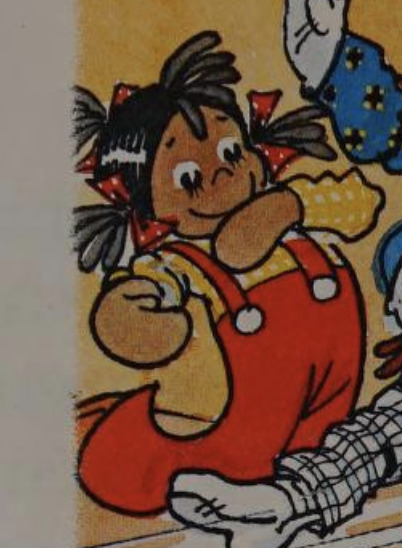
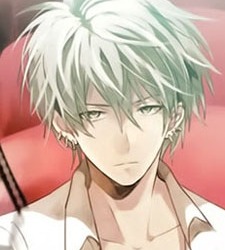
#ultimate obscure blorbo#polls#Cynthia (Raggedy Ann)#Daiya Oomine (The Empty Box and the Zeroth Maria)#round 3
28 notes
·
View notes
Text
A guide to BB19 nicknames
Any holiday/day of the year: Christmas
Any furniture/inanimate household item: Matt
Baldica/Messica/Cynthia: Jessica
Casper the ghost/Scammer/Ronald McDonald/Raggedy Ann: Raven
Pail/Snake-related names: Paul
(Train)wreck-it Ralph/Shrek: Mark
Eugenia/Citizen of Whoville: Elena
Whistlenut/Whistleracist/Racistnut: Jason
please feel free to add more lol
EDIT: I added y’all’s contributions; thanks!!
506 notes
·
View notes
Note
MEOWTAINNNN
🌱- When is their birthday? Where were they born? What was the time of day?
Their first child, a beautiful little girl, is born January 25 at 6:30 am. Their second, a handsome baby boy, is born August 3 at 5:45 pm. Both are born in France.
🔠- Who named them? What does their name mean?
From thee moment of conception the group discussed names. In the end Duchess won out on naming their first child Renee Rose Khan O’Malley. Their second child, while planned, is a bit harder. They fight over his name because Duchess, being the woman that she is, has already picked out names. But Thomas and Shere both want to have their say. In the end the boys got their way and Advik Connor O’Malley Khan was chosen.
💤- Was it difficult to get them to fall asleep at night?
Both babies were particularly fussy when it came time for bed. But they could be soother. Renee often drifted off easier while listening to Duchess’ lilting French songs and Advik dosed off to stories told by any of his parents. It was safe to say both children enjoyed their parent’s voices.
🌀- Were they a social, giggly baby? Or were they a shy baby who did not like forced socialization?
Surprisingly, Renee did not like socializing. She was very shy and often stuck close to her parents. Advik on the other hand. Oh my God that boy was a flirt and a social butterfly. It was so easy for him to make friends.
🍳- What is their favorite childhood dish?
Just like her mother, Renee was very fond of coq au vin (the very same recipie Duch’s nanny made). Advik was the pickiest child and only ate freshly made tomato soup and grilled cheese.
🐻- Did they have a favorite teddy bear/stuffed animal?
Renee had a raggedy Anne doll that she toted around everywhere. Duchess mended it so many times it was ridiculous. Advik, ever the peculiar child, had a stuffed aardvark he got on a school trip to the museum. Everyone was confused by it but no one questioned it. Duchess also spent a ton of time mending it.
🏡- What kind of environment did they grow up in? Was it in a rural or farmlike home? Or did they grow up in the cities? Or were they a small town/suburban child?
Once the children were born, they all settled in Swynlake even though both children were born in France. Duchess stayed fond of the town and both Thomas and Shere wanted to stay at their places of work. It was an easy decision to stay in Swynlake where the trio had met.
👦🏻- What was preschool/kindergarten like?
A nightmare. Duchess wanted to do a private institution but it wasn’t possible so they attended a public school. It was nerve wracking and they totally went over board by being those parents who attended every single PTA meeting and every teacher conference. The kids loved it. They liked finding their little group of friends and enjoyed being able to play all day with less strict rules.
👧🏻- What was elementary/middle school like?
IT DID NOT PREPARE THEM FOR ANYTHING. Renee Rose had a boyfriend by the time third grade rolled around and Advik got into trouble for being the class clown and overly social.
👱🏻♀️- What was high school/college like?
High school gave everyone gray hair. Both children had come out of their shells by high school and it was just… so much. There was constantly teenagers at the house and a never ending barrage of school events. But sending them off to college was the actual worst. Duchess cried when they left, both studied abroad, wanting more than what PrideU could offer them.
🌋- How often did they get caught doing something bad?
Advik was always caught with his hand in the cookie jar. When Renee got caught she offered innocent looks that sometimes got her out of trouble. Not always, though.
🌡- Did they get sick a lot as a child? Did they ever have to go to the hospital for any reason?
There was one time when Renee was a couple of months old that she had to go to the hospital. It was the scariest moment in all of their lives. She’d gotten the flu and they couldn’t get her temperature down and she cried, oh God she wailed. In the end they spent two days in the hospital praying for their baby girl to get better.
🎀- What kinds of games/activities did they like to play?
Renee enjoyed dress up. Saturday mornings were always the days where Duchess would let the little girl into her closet and dress her up and even do her make up. Advik enjoyed playing games that required imagination. The den always had couch pillows and throw pillows on the ground to protect them from the lava or made up into a fort.
And every Friday night the whole family would build a very elaborate fortress out of pillows and linens and blow up mattresses and watch movies. The children often opted to crawl all over their parents, disrupting the movies, but none of them cared. The house was filled with laughter and that was important.
🎏- Did they have a lot of friends? Can you describe a few?
Christ almighty. Advik had so many fucking friends. There was Thomas, who liked to eat glue (or so their son said), and Charlie, who was actually a girl her parents just liked to be funny, and Lucas who could climb any tree and not be scared.
Renee had Cynthia, who liked pink just like her, and Samantha, who had two moms!, and Lucy, who wasn’t really allowed over because her parents didn’t understand how Rose could have one mom but two dads.
💢- Did they ever have a rebellious phase?
Renee got very angry once and wore nothing but black and dyed her hair outrageous colours (her parents didn’t really care but they understood they needed to act like it was #bad). And Advik, spent much of his pre-teen and teenage years acting antisocial and yelling whenever they asked him to do something.
❓- Did they ask a lot of questions when they were younger? Did they like to explore the world?
They were fairly curious kids. Being the kids of two teachers and a well traveled woman, there were plenty of trips to foreign places where they could put their curiosity to the test. Most of the time Shere and Thomas would devise little treasure hunts for them whenever they went to new cities to keep them interested and satiated in terms of knowledge.
🗯- How well did they get along with their siblings?
They got along pretty well, actually. Of course there were little spats here and there but at the end of the day they loved each other very much and was always there to defend each other.
🔷- Free question!
excuse me while I go cry
@professor-lungri, @omalleyofthealley
2 notes
·
View notes
Text

Does anyone have a spare $225 and $15 shipping for the cause?
I'm kidding but I need this so much. It's from a school library, not released to the public. From what I can tell, it's 4 of the 70's cassettes that were also released separately, but instead of coming with a book they come with projector film (sorry, it's not an actual animation) to show alongside it.

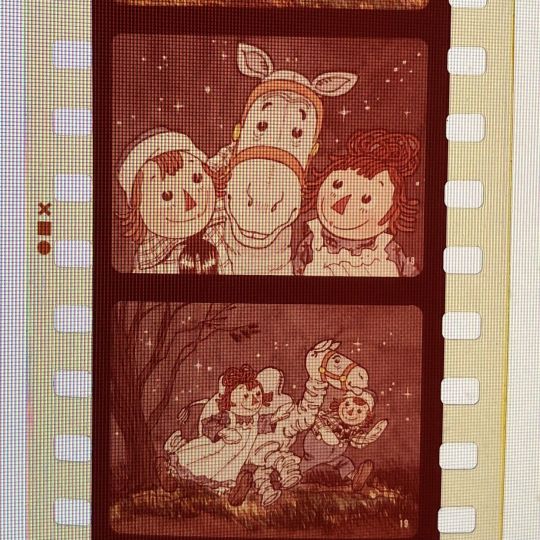
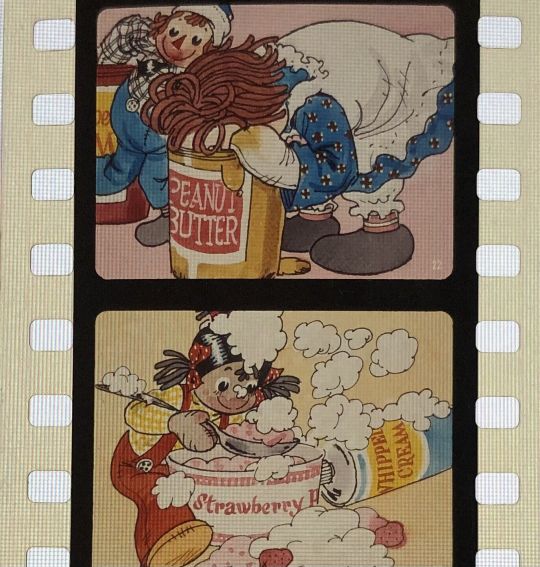
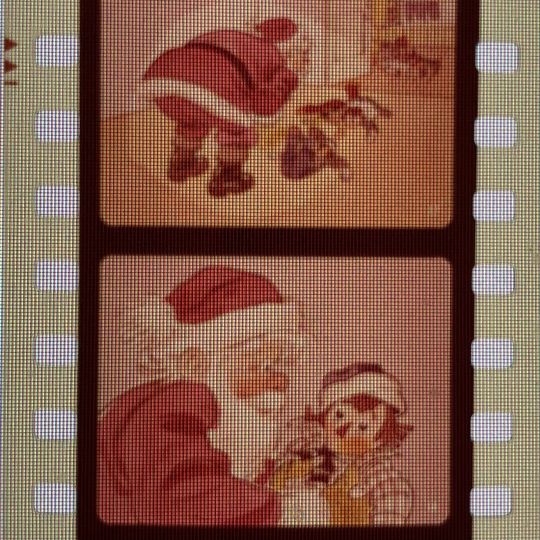
But it has CYNTHIA!
#found media#raggedy ann wiki#raggedy ann#raggedy andy#cynthia raggedy ann#the camel with the wrinkled knees
51 notes
·
View notes